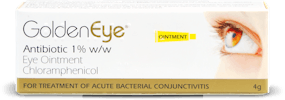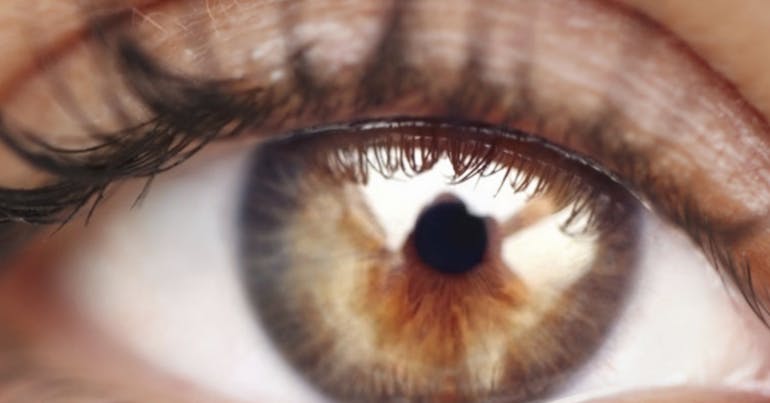Chloramphenicol: A Comprehensive Guide to Usage, Precautions, and Side Effects
In this article, we will discuss a powerful medication known as Chloramphenicol. This antibiotic is a real game-changer in the world of medicine, particularly when it comes to treating bacterial eye infections. It's been around for quite some time and has proven to be incredibly effective in its mission.
What is Chloramphenicol used for?
Chloramphenicol is primarily used to treat bacterial eye infections, often referred to as conjunctivitis. These infections can be quite uncomfortable, causing symptoms like redness, itching, and discharge. Thankfully, Chloramphenicol steps in to save the day, combating these infections and providing much-needed relief. It's important to note that this medication is specifically designed to tackle bacterial infections, so it won't be effective against infections caused by viruses or fungi.
How does Chloramphenicol work?
So, how exactly does Chloramphenicol work its magic? Well, it's all about stopping the growth of bacteria. This antibiotic prevents bacteria from producing proteins that are essential for their growth and multiplication. Without these proteins, the bacteria can't grow, spread, or survive. This halts the infection in its tracks, allowing your body's immune system to eliminate the remaining bacteria. You can learn more about this process from this scientific discussion on Chloramphenicol.
Brands and forms of Chloramphenicol
Chloramphenicol comes in various brands and forms, each designed to cater to different needs and preferences. Some of the common brands include GoldenEye, Optrex, or generics such as Numark or Martindale. The medication is available in two main forms: eye drops and eye ointment. The eye drops are typically used during the day, while the ointment is often applied at night. Your doctor will guide you on the best form and brand for your specific condition.

How to Use Chloramphenicol Eye Drops and Ointment
Using Chloramphenicol eye drops and ointment is a straightforward process, but it's crucial to do it correctly to ensure the medication works effectively. Here's a step-by-step guide:
- Start by washing your hands thoroughly. This is to prevent introducing any additional bacteria into your eyes.
- If you're using the eye drops, gently pull down your lower eyelid to create a small pocket. Squeeze the prescribed number of drops into this pocket. Try not to touch your eye with the dropper as this can contaminate the medication.
- If you're using the ointment, again pull down your lower eyelid. Apply a thin strip of the ointment along the inside of the eyelid.
- Close your eye for a few minutes and try not to blink. This allows the medication to spread across the surface of the eye.
- Repeat the process in your other eye if it's also affected.
Remember, it's important to use the medication regularly and continue using it for the full time prescribed, even if your symptoms improve.
Precautions Before Using Chloramphenicol
Before using Chloramphenicol, there are a few precautions to keep in mind:
- Always follow your doctor's instructions carefully.
- If you're allergic to Chloramphenicol or any other medications, be sure to inform your doctor.
- Let your doctor know about any other medical conditions you have, especially if you have liver or kidney problems.
- If you wear contact lenses, you'll need to avoid wearing them while using this medication. You can start wearing them again once your treatment is complete and your eye is fully healed.
Interactions with Other Medications
Chloramphenicol can interact with other medications, which can affect how it works or increase your risk for serious side effects. It's important to keep a list of all the products you use (including prescription/nonprescription drugs and herbal products) and share it with your doctor and pharmacist. Do not start, stop, or change the dosage of any medicines without your doctor's approval.
What to Do in Case of an Overdose
In the unlikely event of an overdose of Chloramphenicol, it's important to seek medical help immediately. Symptoms of an overdose may include sudden change in vision, persistent eye redness/irritation, or severe dizziness. Remember, it's always better to be safe than sorry, so don't hesitate to contact your healthcare provider if you suspect an overdose.
Storage and Disposal of Chloramphenicol
Proper storage of Chloramphenicol is essential to ensure its effectiveness. Keep it in a cool, dry place away from light and out of reach of children. Do not store it in the bathroom where it can be exposed to moisture. As for disposal, do not flush the medication down the toilet or pour it into a drain unless instructed to do so. When it's time to discard the medication, do it properly and safely. Your pharmacist or local waste disposal company can provide more details on how to safely discard your medication.
Possible Side Effects of Chloramphenicol
Like all medications, Chloramphenicol can cause side effects, although not everyone will experience them. Most of these side effects are mild and should go away on their own as your body adjusts to the medication. These may include:
- Temporary burning or stinging in the eye after applying the medication
- Blurred vision
- Redness or itchiness in the eye
In rare cases, serious side effects can occur. These include:
- Severe allergic reactions, such as rash, itching/swelling (especially of the face/tongue/throat), severe dizziness, or trouble breathing
- Changes in vision
- Persistent eye redness or irritation
Remember, this is not a complete list of possible side effects. If you notice any other effects not listed above, contact your doctor or pharmacist.
What to Do if Side Effects Occur
If you experience any side effects from Chloramphenicol, it's important to take action. For minor side effects like temporary burning or stinging, you may not need to do anything as these often resolve on their own. However, if these symptoms persist or worsen, contact your doctor or pharmacist promptly.
For serious side effects, seek immediate medical attention.
Frequently Asked Questions about Chloramphenicol
1. Can I use Chloramphenicol if I wear contact lenses?
No, you should not wear contact lenses while you're using Chloramphenicol. You can start wearing them again once your treatment is complete and your eye is fully healed.
2. Can I use other eye medications with Chloramphenicol?
It's important to tell your doctor about all medications you're currently using, including other eye medications. They can guide you on how to use them safely with Chloramphenicol.
3. What should I do if I miss a dose?
If you miss a dose, use it as soon as you remember. If it's near the time of the next dose, skip the missed dose and resume your usual dosing schedule. Do not double the dose to catch up.
4. Can I use Chloramphenicol for other types of eye infections?
Chloramphenicol is specifically designed to treat bacterial eye infections. It will not work for other types of eye infections caused by viruses or fungi.
5. How long does it take for Chloramphenicol to work?
You should start to see improvements in your symptoms a few days after starting Chloramphenicol. However, you should continue using it for the full time prescribed, even if your symptoms improve, to ensure that the infection is completely cleared.
Remember, if you have any other questions or concerns about Chloramphenicol, don't hesitate to ask our pharmacist.
- Golden Eye Care: Golden Eye Chloramphenicol
- Mayo Clinic: Chloramphenicol (Ophthalmic Route) Side Effects
- NHS: Chloramphenicol
- Patient Info: Chloramphenicol for Eye Infections
- WebMD: Chloramphenicol Ophthalmic (Eye) : Uses, Side Effects, Interactions, Pictures, Warnings & Dosing

